Orange Queen Epimedium Epimedium × warleyense 'Orangekönigin'

ABOUT
The plant known as the Orange Queen is a hybrid with a distinctive and attractive appearance. It is most recognized for its beautiful flowers, which are a striking shade of orange. These blossoms are small and dainty, with a complex structure that features a prominent spur, characteristic of this group of plants. The petals have a two-toned effect, with the inner sepals lighter than the outer ones, providing a lovely contrast that enhances their ornamental appeal. The foliage of the Orange Queen is equally appealing, with leaves that emerge in spring with a reddish tint before turning green as they mature. The leaves are heart-shaped and are often serrated or spiky along the edges, giving them interesting texture. During autumn, the leaves may take on a bronzy hue, adding another layer of seasonal interest to the garden. The stems of the Orange Queen arch gracefully, creating an elegant display when the plant is in full bloom. The combination of the charming flowers and attractive foliage makes this plant a favorite among gardeners looking for a splash of color and a unique addition to their shade gardens or woodland settings. This hybrid is also valued for its durability and its ability to thrive in different conditions, although it prefers a spot that offers some shelter from the extremes of weather. It is often seen in cultivated gardens, where it contributes a bright and cheerful note to the overall design.
About this plant
 Names
NamesFamily
Berberidaceae
Synonyms
Orange Queen Epimedium, Warley Fairy Wings, Orange Queen Bishop's Hat
Common names
Epimedium × warleyense 'Orange Queen'.
 Toxicity
ToxicityTo humans
The Bishop's hat (Epimedium × warleyense 'Orangekönigin') is not commonly known to be toxic to humans. Therefore, ingestion of this plant typically does not cause poisoning or adverse health effects. However, as with many plants, it is generally advised to avoid ingesting parts of plants that are not known to be edible, as they could potentially cause discomfort or an allergic reaction in some individuals.
To pets
The Bishop's hat (Epimedium × warleyense 'Orangekönigin') is not commonly known to be toxic to pets such as dogs and cats. Ingestion of this plant should not typically result in poisoning or serious health issues for pets. Nevertheless, consuming non-food plants can sometimes lead to gastrointestinal upset in animals, such as vomiting or diarrhea, so it is advisable to prevent pets from eating this or any ornamental plant to avoid potential mild discomfort.
 Characteristics
CharacteristicsLife cycle
Perennials
Foliage type
Semi-deciduous
Color of leaves
Green
Flower color
Orange
Height
1-2 feet (30-60 cm)
Spread
1-2 feet (30-60 cm)
Plant type
Herb
Hardiness zones
5
Native area
China
Benefits
 General Benefits
General Benefits- Attracts Pollinators: Provides a source of nectar and pollen for bees and butterflies, enhancing local biodiversity.
- Drought Tolerance: Once established, it requires minimal watering, making it suitable for xeriscaping or drought-prone areas.
- Low Maintenance: Typically requires little care beyond initial establishment, with limited need for pruning or pest control.
- Shade Tolerance: Can thrive in partial shade, making it a versatile choice for garden spots that receive less sunlight.
- Ground Cover: Its spreading habit can provide a dense ground cover, suppressing weeds and reducing gardening labor.
- Ornamental Value: Offers visual interest with its attractive foliage and bright orange flowers, enhancing garden aesthetics.
- Wildlife Habitat: Provides shelter and breeding places for insects and small wildlife within a garden ecosystem.
- Seasonal Interest: Has a long blooming period from late spring to early summer, adding color during times when other plants may not be in bloom.
 Medical Properties
Medical PropertiesThis plant is not used for medical purposes.
 Air-purifying Qualities
Air-purifying QualitiesThis plant is not specifically known for air purifying qualities.
 Other Uses
Other Uses- Epimedium × warleyense 'Orangekönigin', also known as the Warley Fairy Wings, can be used in cut flower arrangements for its distinctive blooms and foliage.
- The leaves of the Warley Fairy Wings can be pressed and included in botanical art and crafts for their intricate shapes and shades.
- Dried Warley Fairy Wings flowers can be incorporated into potpourri mixes to add color and a light, floral scent.
- These plants can serve as a low-growing ground cover in shaded garden paths or woodland settings.
- Warley Fairy Wings can be used as an educational tool in gardening workshops to illustrate plant breeding and hybridization.
- They can be a natural food source for certain bird and insect species, particularly in forest-like gardens.
- Photographers may use Warley Fairy Wings as a subject for practicing macro photography due to their intricate flower structure.
- The plant can be used in fantasy-themed gardens to evoke an enchanted forest atmosphere.
- In cooler climates, Warley Fairy Wings can be grown in containers and brought indoors during harsh winters to maintain a year-round garden aesthetic.
- The leaves change color throughout seasons, which can be used to create a dynamic landscape design with shifting hues.
Interesting Facts
 Feng Shui
Feng ShuiThe plant Bishop's Hat is not used in Feng Shui practice.
 Zodiac Sign Compitability
Zodiac Sign CompitabilityThe plant Bishop's Hat is not used in astrology practice.
 Plant Symbolism
Plant Symbolism- Aphrodisiac: Epimedium, commonly known as Bishop's Hat, is traditionally considered an aphrodisiac, likely because of its use in herbal medicine to enhance sexual function.
- Youthfulness: The plant's ability to thrive in spring and its association with enhancing vitality often symbolize youth and rejuvenation.
- Protection: In some gardening folklore, the Bishop's Hat is thought to offer protection due to its robust nature, shielding the garden's more delicate plants.
- Tolerance: Its capacity to grow in difficult conditions suggests a symbolic meaning of tolerance and overcoming adversity.
 Water
WaterThe Bishop's Hat should be watered deeply once a week during the growing season, allowing the soil to slightly dry out between waterings. Ensure the plant receives about 1 inch of water each week, either through rainfall or manual watering. During periods of drought or extreme heat, the watering frequency should be increased to twice a week. During the winter, when the plant is dormant, less frequent watering is required—typically, reducing to once every two weeks will suffice, depending on the soil moisture levels. Always avoid waterlogged conditions as this can lead to root rot.
 Light
LightThe Bishop's Hat thrives best in partial to full shade, making it an ideal plant for woodland gardens or shaded borders. It can tolerate a few hours of morning sun, but should be protected from the intense afternoon sunlight to prevent leaf scorch. A spot that receives dappled sunlight throughout the day is optimal for this plant's growth and flower production.
 Temperature
TemperatureThe Bishop's Hat prefers temperatures ranging from 50°F to 75°F and can survive in temperatures as low as 20°F to ensure winter survival. It is generally hardy in zones 5 through 8. Avoid exposing the plant to temperatures above 80°F for prolonged periods, as higher temperatures can stress the plant and affect its overall health.
 Pruning
PruningPrune the Bishop's Hat after flowering to remove spent blooms and encourage a second flush of flowers. Pruning can also be done in late winter or early spring to remove old foliage and make way for new growth. The best time for a major trim is before the new foliage emerges, as this makes it easier to see and remove the older, less vibrant leaves.
 Cleaning
CleaningAs needed
 Soil
SoilBishop's Hat prefers moist, well-drained soil rich in organic matter with a neutral to slightly acidic pH of about 6.5 to 7.0. A blend of two parts garden soil, one part sand, and one part compost or peat moss can create the ideal growing conditions for this plant.
 Repotting
RepottingBishop's Hat does not need frequent repotting and can thrive in the same pot for several years. Check the root system every two to three years and repot only if the roots have become crowded in the container.
 Humidity & Misting
Humidity & MistingBishop's Hat thrives in moderate to high humidity environments. Aim for a humidity level between 50% to 70% for optimal growth, ensuring that the plant's environment is neither too dry nor excessively damp.
 Suitable locations
Suitable locationsIndoor
Keep in bright indirect light and maintain moist soil.
Outdoor
Grow in partial shade and ensure soil stays moist.
Hardiness zone
5-9 USDA
 Life cycle
Life cycleEpimedium × warleyense 'Orangekönigin', commonly known as the Warley Fairy Wing or Orange Queen, begins its life cycle when a seed germinates, typically in a cool, moist environment in spring. After germination, the seedling emerges, developing a small rosette of leaves at the soil's surface and sending down a root to anchor itself. As it matures, it enters a vegetative growth phase, producing larger and more abundant foliage, and in the case of Epimedium, an expanding rhizome system. Once the plant is mature enough, which could take a couple of years, it will produce distinctive orange flowers in the spring, often in April or May, and the flowering phase may continue for several weeks. After pollination, seeds are produced and dispersed, continuing the cycle; however, Epimediums also commonly spread by vegetative means through their rhizomes. The plant dies back to the rhizome in late autumn or winter, entering a dormant phase, but it will resurge the following spring with new growth.
 Propogation
PropogationPropogation time
Spring to early summer
The most popular method for propagating Epimedium × warleyense 'Orangekönigin', commonly known as Warley Fairy Wings, is by division. This is generally done in late fall or early spring. It involves carefully digging up the plant, ensuring to keep a good amount of roots intact, and gently separating the clumps into smaller sections. Each section should have at least one growing point or shoot. Once the clumps are divided, they can be replanted into well-prepared soil, maintaining the original planting depth. Divisions should be watered thoroughly after planting and kept moist until they are established. This method allows for the fairly rapid increase of the plant stock and maintains the true characteristics of the 'Orangekönigin' cultivar.

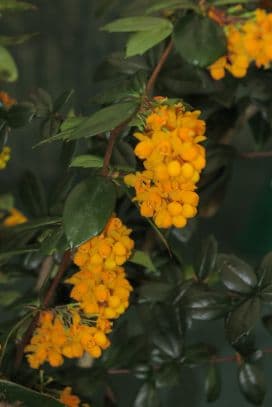
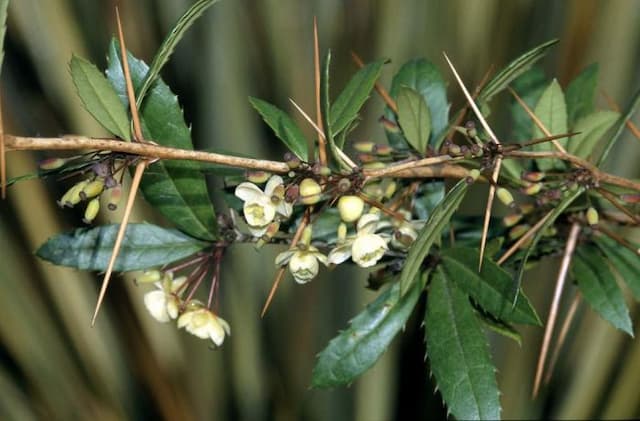
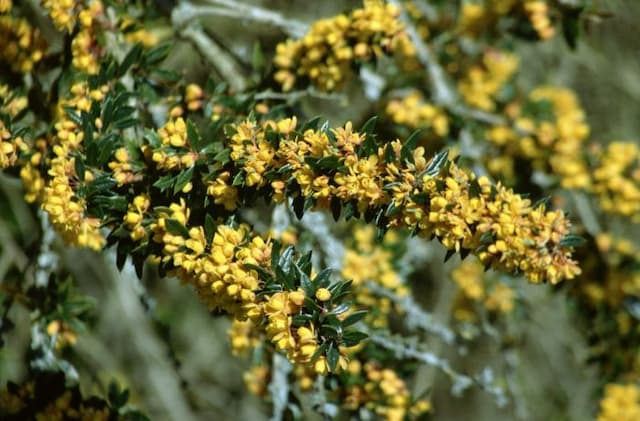

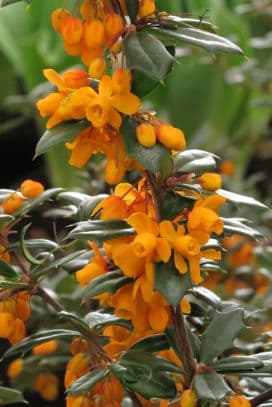
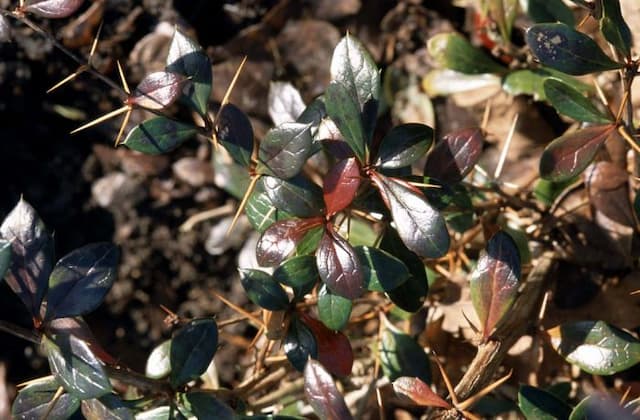


![Japanese barberry [Bonanza Gold]](/_next/image?url=https%3A%2F%2Fplants-admin.emdemapps.com%2Fimages%2Fplants%2F%2Fimages%2F604b5385e413f.png&w=640&q=75)